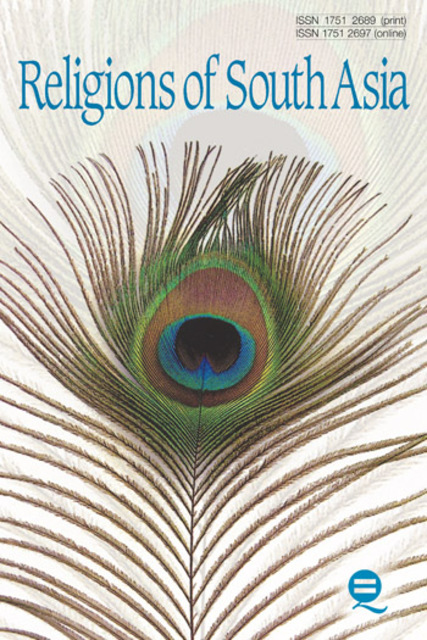Self-Orientalism at Europe’s Margins: Historical Imaginary, Ritual Practice, and Interfaith Dialogue in an Indo-Baltic Nath Network

Stuparich, E. (2022). Self-Orientalism at Europe’s Margins: Historical Imaginary, Ritual Practice, and Interfaith Dialogue in an Indo-Baltic Nath Network. Religions of South Asia, 16(1), 66–89. https://doi.org/10.1558/rosa.23306
Full description
In this paper, I discuss Latvian participation in the Nath Sampradaya on the background of a deep history of Baltic fascination with the East. I highlight three different levels of self-understanding for the practitioners of this religious movement: historical imaginary, ritual practice, and interfaith dialogue. While partaking of the rhetoric of Indo-Baltic kinship that has by now become part of the self-representation of the Balts, the Latvian yogis do not strive for a Hindu-pagan revival, but identify instead in forms of esoteric ritual practice (tantra) and bodily discipline (yoga) a preferred tool to regain a notion of themselves as self-ruling, empowered subjects, thus projecting onto the realm of the embodied self the quest for independence historically expressed in the public sphere. Interfaith dialogue, represented by their collaboration with a Catholic priest, emerges as an unexpected element.
- typeImage
- created on
- file formatjpeg
- file size132 KB
- container titleReligions of South Asia
- creatorEloisa Stuparich
- issnISSN 1751-2697 (Online)
- issue16.1
- publisherEquinox Publishing Ltd.
- publisher placeSheffield, United Kingdom
- rightsEquinox Publishing Ltd.
- doi
We use cookies to analyze our traffic. Please decide if you are willing to accept cookies from our website. You can change this setting anytime in Privacy Settings.
